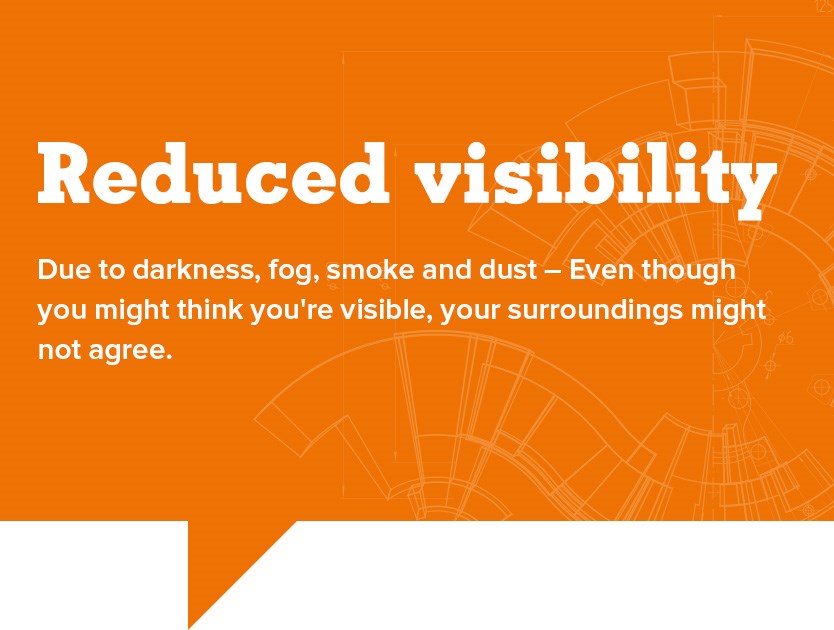
Darkness, fog, smoke and dust – there are many situations where visibility is impaired. When you are visible and can see well, the number of accidents is reduced. Accidents that are often serious and could even lead to death. Even if you think you're visible, those around you might not agree.
Using the right equipment at the right time makes working days, and nights, much safer. Being seen and seeing well are not only important, they're vital.


Javascript is disabled in your browser. For full functionality, we recommend that you turns on Javascript